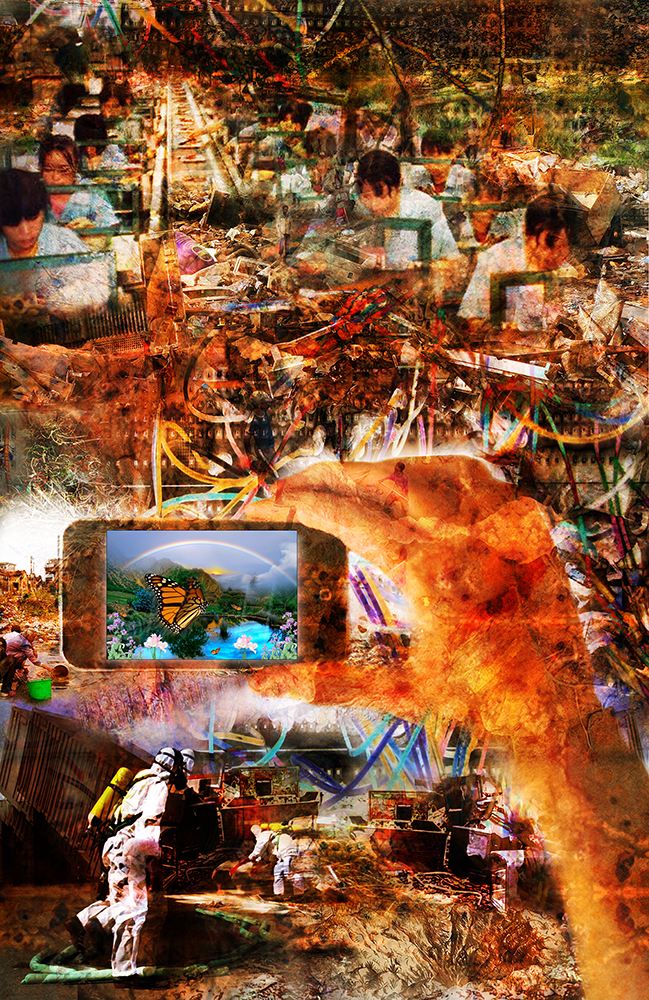eWaste

eWaste
2014
By itself, a brand attached to a product is worth nothing. If brands matter, it is because it is us – faithful consumers – who are branded. This is the job of marketers, who employ artists and designers, statisticians and even psychologists in the ongoing competition to gain the biggest chunk of the public’s “mindshare”. We may have been conditioned to think by years of advertising featuring sleekly designed hi-tech gadgets occupying large expanses of glossy white paper that new technologies are essentially clean technologies. However, there are a myriad of toxic chemicals found in electronics, chemicals that damage the health of workers, communities and the environment at an ever-increasing speed and severity as we try to satisfy our endless desire for the newest gadgets and the accelerating demands of consumer capitalism.
From the mines of the war torn and poverty stricken Democratic Republic of the Congo where destitute children dig coltan for use in consumer electronics, to a “clean room” of a semiconductor factory in the United States where workers suffer from exposure to neurotoxins (even while they wear clothing to protect the technology they make from contamination from human hair and skin), to sweatshops in China where workers assemble iPhones by hand behind locked gates, armed guards and razor wire, to India where the machines that have reached the end their all too brief lifespans are sent to be disassembled by children unaware of the deadly toxins they handle daily, the tremendous cost to human health and well-being could never be included in the price tag of even our most expensive hi-tech gadgets.
The Environmental Protection Agency estimates that waste from discarded electronics is growing two to three times the rate of any other source of waste. Only 15-20% of e-waste is recycled, and even if 100% were recycled it would only account for a small amount of the total waste produced before products ever reach consumers. When we consider that at least 70 barrels of waste are created upstream during resource extraction and production processes for every single barrel of consumer waste produced, we can begin to see the limitations of consumer recycling and the need to create alternatives to consumer-driven capitalist economics.
We live in a time when many people are so alienated from the natural world that the concept of “nature deficit disorder” has entered our vocabulary to describe the potential mental and physical health effects from much of our society’s profound alienation from the natural world. Simultaneously, we have desperately used our technology to create simulations – extraordinary lies about the natural world – which light up our screens with the opposing and equally disturbing images of pristine “natural” settings untouched by human hands or post-apocalyptic wastelands in which humans are still somehow able to survive despite the collapse of the earth’s life support systems. We have made it possible, through our technologies, to immerse ourselves in the image of the world we want to see. However, until we get out there and act in the real world, these visions will remain only shadows on the wall while the world outside continues to decline and taking us ignorantly with it.